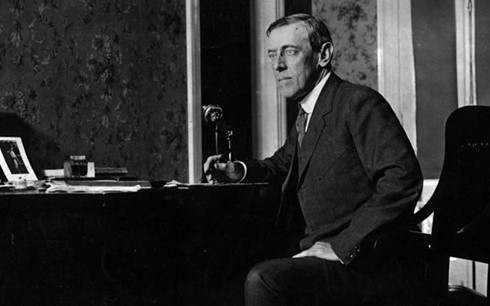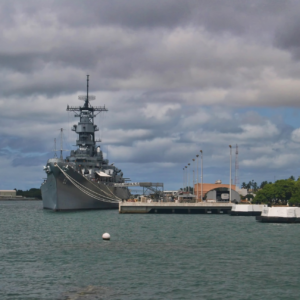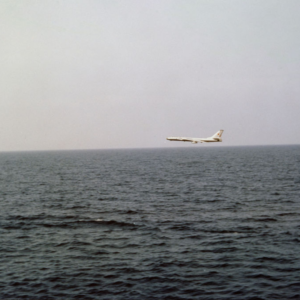The Secret Telegram That Dragged America Into World War I
The United States had wisely and patiently avoided entering World War I. However, a telegram from Germany to Mexico changed America’s attitude.
The US Congress finally approved entry into the war in April 1917, a decision that most observers at the time considered inevitable. Author Patrick Gregory explains how America came to this decision:
More than two months earlier, the German Reich had resumed its policy of unrestricted submarine warfare, which meant attacking any ship, including American ships, in the coastal areas around the British Isles.
However, although war was inevitable, it was not inevitable, and was very unlikely.
Maximum Restraint
President Woodrow Wilson had used every political means possible for the previous two and a half years to keep the country out of war. In doing so, he often encountered fierce political opposition from within the United States.
Having witnessed the American Civil War in his homeland (the southern states of the United States) as a child, he was determined to keep his country out of the fire of war in Europe – World War I, which broke out in 1914. He felt that American foreign policy would not improve if the United States entered this Great War.
Neutrality was the red thread that ran through Wilson’s policy, as well as the key word in the relationship between the United States and Europe. Neutrality “in thought and in action” was met with anger by critics, including Republicans like former President Theodore Roosevelt.
However, in the following years, President Wilson persisted with his policy, despite some extreme provocations from his opponents.
The most notable provocation was in May 1915, when a German submarine torpedoed the passenger ship RMS Lusitania off the coast of Ireland, killing nearly 1,200 people, including 128 Americans.
Within the United States, voices of protest grew, calling for regulation and intervention. Wilson, however, won a small concession from the German government. In September 1915, Kaiser Wilhelm II ordered German warships not to sink passenger ships without warning. This order brought some calm to the United States.
President Wilson silenced some of his critics with the National Defense Act of 1916, which aimed to increase the size of the military in response to those who argued that if war came to America, the United States would be unprepared.
Nevertheless, Wilson’s watchful eye remained. He even ran for the next term of President with the slogan “He (meaning Wilson – ND) saves us from war”.
Wilson was re-elected President by a narrow margin. In January 1917, he even addressed the US Senate, asking for help in building “a foundation of peace between nations” once the war was over.
So when the US decided to enter the war, it was sudden and unexpected.
Germany goes ahead, asking Mexico to fight the US
Just over a week after Wilson’s speech in the Senate, the German Ambassador in Washington on January 31, 1917, went to see US Secretary of State Robert Lansing.

US President Wilson. Photo: Getty.
This Ambassador brought a letter declaring that Germany would resume its policy of unrestricted attacks by U-boats. The clock was ticking. The first diplomatic threads were severed. Then the US tried what Wilson called “armed neutrality”. But events developed on their own terms, without outside intervention.
The American public was abuzz with a telegram purportedly from German Foreign Minister Arthur Zimmerman, offering military aid to Mexico if the United States entered the war on the side of the Allies against Germany.
Zimmerman’s proposal, delivered through the German Embassy in Mexico, was presented in a straightforward manner: “Let’s wage war together, let’s make peace together.”
If Mexico agreed, it would receive generous financial support to retake the territories it had lost to the Americans: in the states of Texas, New Mexico and Arizona.
Zimmerman said: “The relentless deployment of our submarines will lead to peace in a matter of months.”
Some people sensed that the Allies wanted to draw the United States into the war. But on March 29, 1917, the same German Foreign Minister admitted to engaging Mexico, and even justified his argument by referring to the “hostile attitude” of the US government.
On April 2, 1917, US President Wilson appeared before a joint session of the US Congress. Fully aware of what he was doing, Wilson asked the US Congress to declare Germany’s actions as nothing less than war against the government and people of the US.
The policy of armed neutrality was useless. It had already proven itself to be ineffective in protecting US shipping from attacks by illegal German submarines.
President Wilson declared: “We have no quarrel with the German people. We have no feelings towards them but sympathy and friendship. But it is necessary to make this world safe for democracy.” Two days later, the US Senate voted in favor of President Wilson’s decision. Two days later, the US House of Representatives also approved this decision. That same day (April 6, 1917), the US President signed the official declaration of war. The United States entered World War I.
News
How Hezbollah & Israel counter-attack after the Lebanon Explosion
How Hezbollah & Israel counter-attack after the Lebanon Explosion This is how Hezbollah responded to Israel after the sophisticated pager and walkie-talkie explosions, which occurred across Lebanon. They retaliated by launching guided missiles for the first time. The three strikes…
[MUST WATCH] In pictures: The deadliest day in Lebanon in nearly a year of conflict
In pictures: Israel strikes hundreds of Hezbollah targets in Lebanon Israel attacked hundreds of Hezbollah targets on Monday in airstrikes, making it the deadliest day in Lebanon in nearly a year of conflict. Smoke billows over southern Lebanon following Israeli…
BREAKING NEWS: US sends more troops to Middle East as violence rises between Israel and Hezbollah
US sends more troops to Middle East as violence rises between Israel and Hezbollah Violence between Israel and Hezbollah is raising risk of a greater regional war. WASHINGTON — The U.S. is sending a small number of additional troops to the…
Easy Company Facts Even Hardcore Fans of ‘Band of Brothers’ Don’t Know
Photo Credit: HBO / Getty Images HBO’s 2001 miniseries, Band of Brothers, has continued to gain popularity in the decades since its release. This is partly due to later generations having greater access to the series – in particular, via…
Mighty MO – USS Missouri (BB-63) Video and Photos
There are three other ships in the United States Navy which were named after the state of Missouri besides the battleship USS Missouri (BB 63), and although she became associated with the history of the Japanese raid at Pearl Harbor, she…
A Soviet TU-16 medium jet bomber flies past the anti-submarine warfare support aircraft carrier USS Essex
That Time A Soviet Tu-16 Badger Crashed Into The Sea After Buzzing A U.S. Aircraft Carrier A screenshot from the video filmed aboard USS Essex shows the Tu-16 Badger flying very low close to the aircraft carrier. Low pass with…
End of content
No more pages to load











